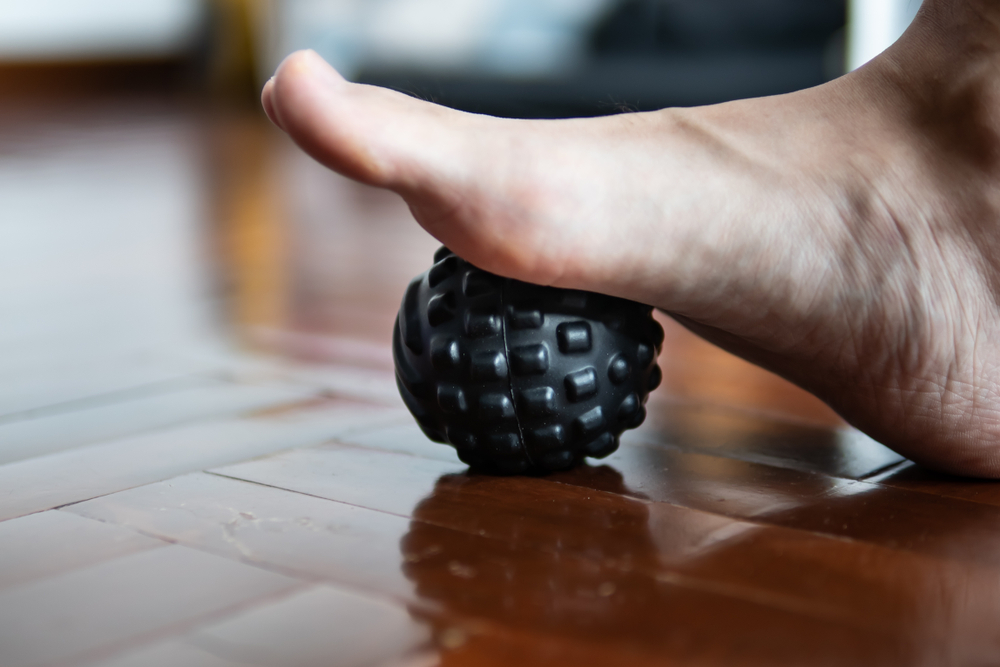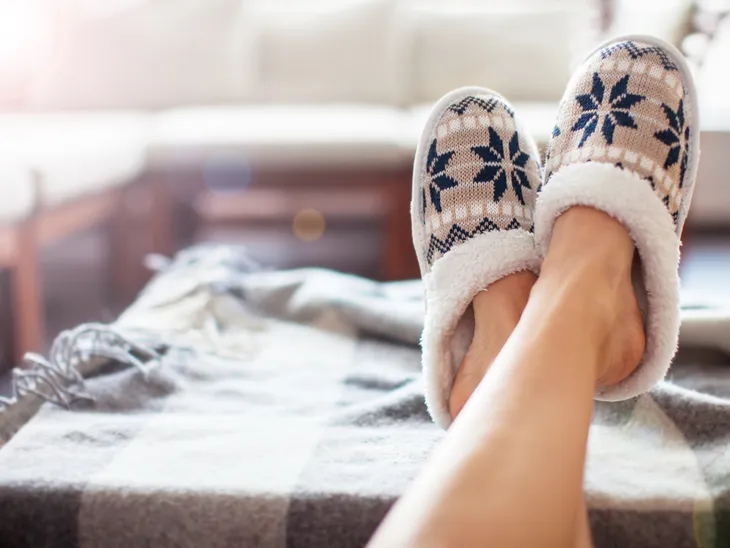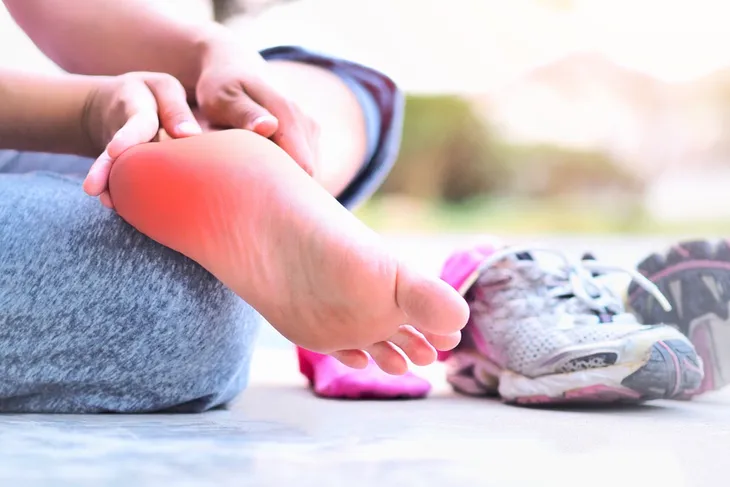The most common cause of heel pain, plantar fasciitis occurs when the plantar fascia—the ligament that connects the heel bone to the toes—becomes strained. This can lead to pain in the heel or bottom of the foot, which tends to be the most pronounced first thing in the morning.
Plantar fasciitis most commonly occurs in middle-aged people, but can also happen to younger individuals who spend a great deal of time on their feet—such as athletes, soldiers and those who run for leisure. To help alleviate the pain of plantar fasciitis, the following are six methods that can be used.
Rest the Feet
Because the pain associated with plantar fasciitis is due to strain, one of the best ways to help relieve it is to allow the feet to rest. WebMD suggests limiting or entirely stopping any activities that are causing it, and to “avoid running or walking on hard surfaces, such as concrete.”
In one study mentioned by the American Academy of Family Physicians, 25 percent of patients with plantar fasciitis indicated that rest was the most effective treatment.
Ice the Heel
Although heat can sometimes provide relief from aches and pains, WebMD advises to avoid using it to treat plantar fasciitis as it can often make symptoms worse. Instead, the source recommends applying ice to the heel to help reduce inflammation.
Nonsteroidal anti-inflammatory drugs (NSAIDs) such as ibuprofen or naproxen can also help to relieve the inflammation and pain of plantar fasciitis, whether taken in pill form or applied topically to the area using a cream.
Wear Supportive Footwear
People with plantar fasciitis should be mindful of the shoes they wear, as those with hard or flat soles can often make symptoms worse. HealthLink BC recommends opting for footwear “with good arch support and a cushioned sole.”
The source also suggests trying heel cups or shoe inserts (orthotics). The American Academy of Family Physicians says that heel cups can help to relieve tension on the plantar fascia by elevating the heel on a cushion. Orthotics, custom inserts made based on a mold of an individual’s foot, are beneficial for providing arch support. If you have hard surfaces at home, it’s best to wear supportive footwear inside to help the plantar fascia pain settle.
Stretching Exercises
There are a variety of exercises that can be beneficial for treating plantar fasciitis, such as the toe and calf stretches. WebMD recommends doing them when you first get up in the morning, as well as several more times throughout the day.
The source says these stretches can “help your ligament become more flexible and strengthen the muscles that support your arch.“
Night Splints
If the pain and inflammation of plantar fasciitis persist beyond six weeks, your physician may recommend other nonsurgical treatment options, such as night splints.
According to Medscape.com, the feet are often in a plantar-flexed position while a person sleeps, causing the plantar fascia to be shortened. Night splints “maintain a neutral 90° foot-leg angle and provide constant passive stretching of the Achilles tendon and plantar fascia,” making pain and inflammation much manageable first thing in the morning.
Physical Therapy
Physical therapy may help to treat plantar fasciitis by teaching the affected individual how to effectively stretch and strengthen the plantar fascia and Achilles tendon, as well as strengthen lower leg muscles, which stabilize the ankle and heel.
A physical therapist can also teach proper technique for applying athletic tape. SportsInjuryClinic.net says that taping can help to quickly relieve pain by “unloading some of the strain on the plantar fascia allowing the tissues to heal.”









